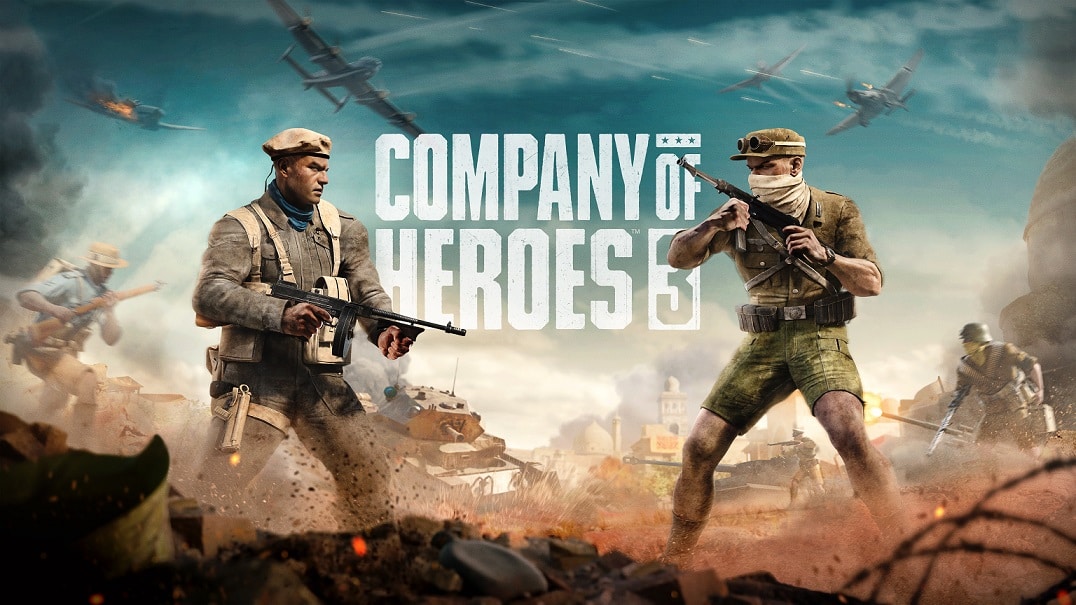Composing Company of Heroes 3
The music of the North African and Italian campaigns

Project: Company of Heroes 3
Client: Relic Entertainment
We Did: Music Composition • Orchestra Recordings
Whether storming the beaches of Normandy, blasting block-by-block mayhem in Stalingrad, or parachuting for a secret mission outside Naples, the Company of Heroes franchise has always been a thrilling and immersive experience. In Company of Heroes 3 – just released on February 23 – players once again enter the heart-pumping action of war. The new installment takes players through the North African and Italian campaigns, offering tense and exciting single and multiplayer modes. A heroic and gallant soundtrack provided by Dynamedion accompanies every moment of the game, making for a truly unforgettable experience.
The Company of Heroes video game series is developed by Relic Entertainment and published by Sega. The first installment came out in 2006 set during the Normandy D-Day landings. It was such a huge hit that they decided to follow it up with a sequel focusing on the Eastern Front, keying in new elements like changeable weather and destructible environments. The latest addition, brings players back to the Western Front, though this time in North Africa and Italy, has just been released after much fanfare and anticipation.
The official game trailer
We were very excited to continue our cooperation with Relic Entertainment, having worked together with them on the epic project of Age of Empires IV. The project was a huge success and we had such a positive working experience that we continued our synergy with Company of Heroes 3. It started with the release trailers composed by Alex Pfeffer and Benny Oschmann. Benny went on to compose the theme, and for other trailers and the remaining soundtrack was joined by our team of composers Henning Nugel, Armin Haas, Alex Röder, Jochen Flach, and Matthias Wolf, with Tilman Sillescu taking the lead role. The orchestration was done by David Christiansen.
The musical style of Company of Heroes
This was our first Company of Heroes game to tackle, which meant having to follow the footsteps of the composers of the past two games. Jeremy Soule composed the original game’s music, with Cris Velasco taking the lead of the second game. We were excited to pick up the third installment, following on such great pieces of work.
The style had to carry over from the previous works, while still creating something altogether new for the third game. “It’s always difficult to write a soundtrack for a sequel to a big brand,” Tilman said. “It’s important not to leave the style of the previous games, because Company of Heroes fans love this music and don’t want a blatant change. But the developers also wanted a new theme, new, fresh sounds and melodies that reflected the new setting.”
Read about Dynamedion and Relic Entertainment’s past partnership in Age of Empires IV
“As the game progresses,” Henning adds, “the gamer will have to make difficult choices. So the music has to be heroic, but also underline that being a commander forces tough decisions on you. It should feel confident, but not without emphasizing a serious potential for regret.”
The main theme
Benny Oschmann was responsible for composing the main theme and received much praise from his coworkers for a job well done. “Benny wrote a beautiful theme and all of us referenced it here and there in our tracks,” Henning shared. “In my opinion,” Tilman added, “this would also do justice to a big Hollywood movie J.”
Benny tapped into compositions for classic war movies like John Williams score for Saving Private Ryan and Hans Zimmer’s work for The Pacific, as well as the first two games. “Aaron, the Audio Director, wanted the Main Theme to be very heroic, almost superhero-like, so there might be a little influence from the Marvel-movies as well.”
The main theme for Company of Heroes 3
The composition opens with an unaccompanied horn solo in which you can hear the clear John Williams influence. “The horn has such a beautiful and warm tone in that range and the player absolutely nailed it,” Benny said. The strings join the horn as it progresses, followed by a snare striking up a march, and the “superhero-like” horn theme blasts in.
In-game music
Writing the in-game music was not too different than composing for Age of Empires, which also used an intelligent music engine. The music was to fit as naturally as possible into the gameplay, which required the music to be composed into individual building blocks, while still sounding thematically and technically consistent with the others. “The pieces are designed to be put together in any order depending on what is happening in the game,” explains Jochen.
Keeping the interactivity of the game in mind was the key to making the music engine and all the building blocks work appropriately. One had to keep in mind that the gamer might move or stay still, and the music couldn’t be too noticeably repetitive. “If the gamer stays in the same level or stage for many minutes, it is possible that the same music loops a few times,” Armin explains. “So you need to be aware that the music sounds versatile and not annoying after hearing it 2-3 times. The music needs to breathe, and the melody shouldn’t be very dominant, so that you don’t recognize any repetitions of it.”
Jochen added: “The engine took care of the ordering in real time, so that the music seems very vivid and connected to the game. That’s one of the biggest differences to music for movies. Movie soundtracks are always following the story, which is linear. Every time you’re watching the movie, it’s the same movie. That’s not the case with games.”
The soundtrack changes depending on what’s happening on the screen, adapting to the player’s gameplay. When a battle would start, for example, the music would take on a low character and slowly build up, increasing the tension and intensity, until it finally reached the last battle level. “For this, you have to coordinate the different parts of the music well so that they flow smoothly and imperceptibly into each other,” Tilman said.
Those big buildups for the battle scenes were filled with a lot more action and excitement. “Very old-school orchestral,” Armin describes them. “No synthesizers, no big percussion. It was just a battle track living from energetic string rhythms and exploding brass.”
Localizing the music
It is no easy task to write a theme that both fits the setting and context of the game, while still being catchy enough to be remembered by the players. Throughout Benny’s work, along with the others, they had to incorporate typical instruments for both campaigns. The trick though, was to make it sound seamless and natural, while not sounding cliché. For Italy, they tried to use an accordion and mandolin, while for the North African campaign they used duduk and percussive elements to capture the setting. It was a challenge because it could feel too intentional, but the composers tuned in and overcame it. Benny said, thinking of the clearest moment you can hear the instrumentation, “At one spot in the Main Theme you can hear Italian Mandolin followed by a North African Flute, but the colors are very subtle.”
Bringing the scores to life
Our ever-ready orchestrator David Christiansen brought all the music to life. He orchestrated the works and went to Budapest for the recording process, working with the Budapest Scoring Orchestra. “David did another superb job with the orchestration and was a great help during the recordings,” remarked Henning. He went on about how great the orchestra was: “My track was fast in places and has lots of string runs. I really thought it wouldn’t be easy to play, but the string section delivered these parts on the second to third take. These players are unbelievably good.”
Working with Relic
Just as when working on the Age of Empires soundtrack, working with Relic was an excellent experience for our composers. Aaron Janzen was the main contact from the beginning. “Aaron and I talked quite a few times via Skype about how to make the music and how to use it, passing small layouts back and forth and testing them in gameplay,” Tilman said. “He also came up with the idea of making individual elements from the background soundtrack available for gameplay – he created a huge pool of options in the game with our music, which is a great thing that we plan to do more often in the future, just because it works so well in the game!”
Company of Heroes 3 is now available on Steam and is coming to PlayStation 5 and Xbox Series X|S later this year. For more information about all things Company of Heroes 3, please visit https://www.companyofheroes.com/.
Are you also interested in working together with Dynamedion? Check out our services and tell us more about your project!




